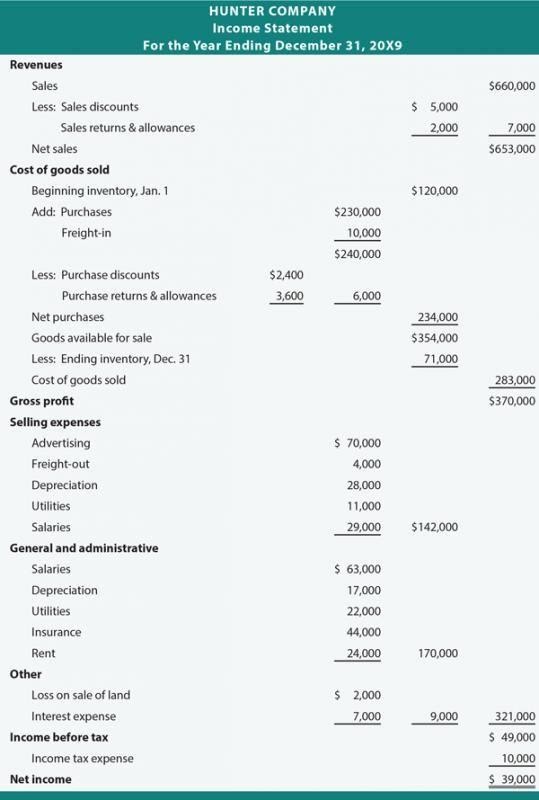Content

Using 360 as the number of days in the year, the company’s days’ sales in inventory was 40 days . Since sales and inventory levels usually fluctuate during a year, the 40 days is an average from a previous time. Days sales in inventory is also important to track because it’s another metric that can help brands tell how efficient their inventory management is. Inventory costs are a huge part of a brand’s overall costs, which is why it’s critical for brands to ensure an efficient inventory management process.
On the other hand, if the inventory turnover ratio is low, it indicates the company’s goods are slow to move or are not getting sold much in the market. As a result, it means higher holding costs, possible outdating of goods held, and naturally lowers profits. On the other hand, DSI shows the time frame the business can turn its inventory into sales. Therefore, inventory turnover and days sales in inventory concepts are related. The formula of days sales inventory is calculated by dividing the closing inventory buy the cost of goods sold and multiplying it by 365.
DSI vs. Inventory Turnover
While companies operating in the steel industry have average days in inventory levels of 50, a DIO calculation of 6 is considered optimum for companies in the food sector. Days’ sales in inventory indicates the average time required for a company to convert its inventory into sales. However, a large number may also mean that management has decided to maintain high inventory levels in order to achieve high order fulfillment rates. DSI is also known as the average age of inventory, days inventory outstanding , days in inventory , days sales in inventory, or days inventory and is interpreted in multiple ways. Indicating the liquidity of the inventory, the figure represents how many days a company’s current stock of inventory will last. Generally, a lower DSI is preferred as it indicates a shorter duration to clear off the inventory, though the average DSI varies from one industry to another.
- Days Sales of Inventory is calculated by dividing a company’s sales by its average inventory.
- The raw materials inventory for BlueCart Coffee Company is fresh, unroasted green coffee beans.
- Once you identify that you’re carrying too much days-worth of food on hand , you can do something about it.
- The program will digitize the goods entry and exit processes, slotting products ideally according to preset criteria and rules.
- This ratio also calculates the number of days vital funds are tied up to the inventory in place.
From here, the days in inventory formula can be rewritten as the numerator multiplied by the inverse of the denominator. Higher Inventory with low inventory days indicates the business is growing and the management is able to increase its inventory management. Thus from the above calculations, it has been found that the Business scenario is more or less in the same state.
Days’ sales in inventory
Tight inventory control is important because having food that sits for too long on the shelves is one of the most expensive things that you can have in the restaurant industry. ProductCLOUD FULFILLMENT PLATFORM Logiwa has built a fully integrated WMS and cloud order fulfillment software solution for B2C and DTC businesses. With Flowspace’s tools, brands can better manage inventory by having safety stock to avoid low inventory count situations while also avoiding excess inventory cost. Order management and current inventory to ensure costs are being optimized.

This helps you to strike the right balance of getting the greatest supplier discount you can without negatively affecting your inventory turnover ratio. You can find average inventory by adding beginning inventory and ending inventory and dividing by 2. We’ll assume that you’ve calculated your cost of goods sold , but you can read our full analysis on COGS and contribution margin here.
Calculation Example
It also instills confidence in the operation of your business and lowers the risk of ending up with worthless dead stock. In any event, it’s best to rely on a warehouse management system such as Easy WMS from Mecalux. This system not only incorporates rules and algorithms to assign each product a location , but also organizes operators’ tasks to make them more efficient. Hence, products can be dispatched more promptly, reducing days sales of inventory. The inventory turnover ratio is representative of which of the following? B) The number of times inventory is sold and restocked during the year.

Right Now uses the periodic inventory system, and the physical count at October 31indicates that 130 units of merchandise inventory are on hand. If a company sales primarily at the beginning of the year, perhaps their inventory will be extraordinarily high at the end of the year to prepare for the following month. Data analytics can help you understand your inventory better and make more informed decisions about stock levels.
Days Inventory Outstanding: (DIO)
With a warehouse management system , you can prioritize the dispatch of products that run the risk of spoiling. It is important to realize that a financial ratio will number of days sales in inventory likely vary between industries. Hence, a company’s ratios should be compared to its own past financial ratios and to the ratios of companies within its industry.
What does number of days sales mean?
Day sales in accounts receivables is a measure of the average number of days it takes a business to collect payments following a sale. The days sales—also called days sales outstanding (DSO)—is a metric that can be calculated on a monthly, quarterly or yearly basis.
What is a good days sales on inventory ratio?
What Is a Good Days Sale of Inventory Number? In order to efficiently manage inventories and balance idle stock with being understocked, many experts agree that a good DSI is somewhere between 30 and 60 days. This, of course, will vary by industry, company size, and other factors.